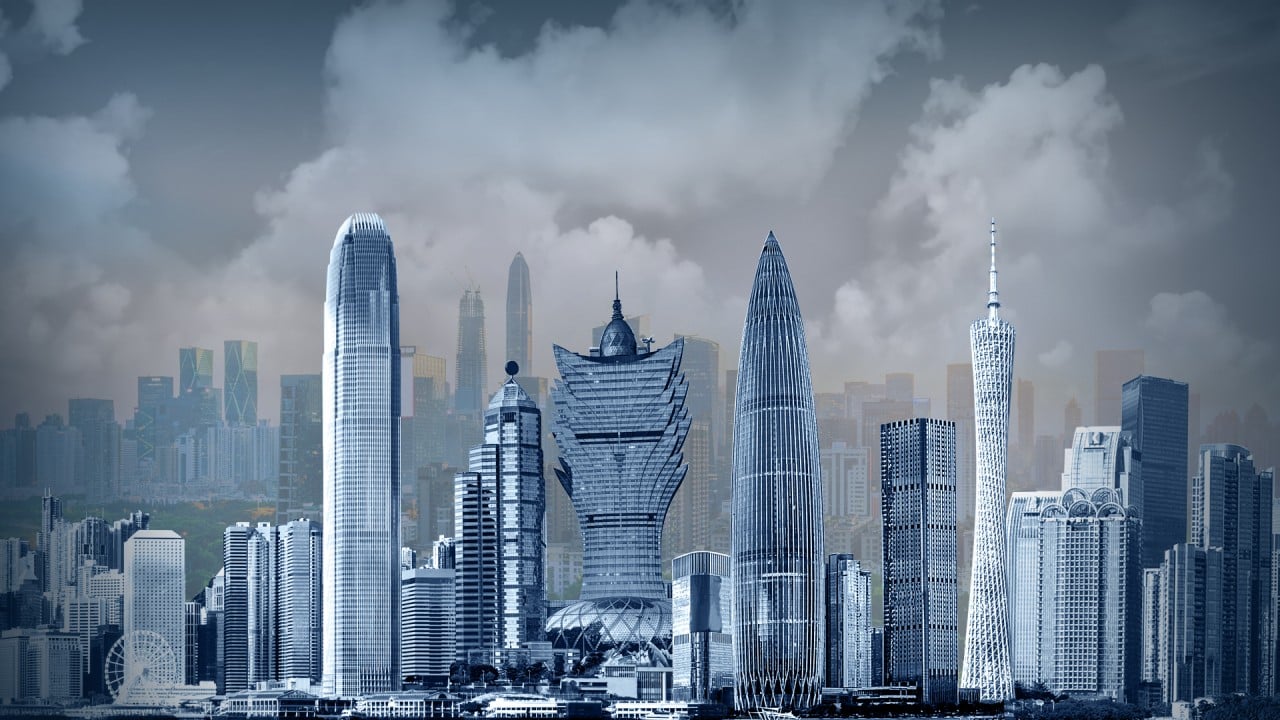
06:19
High hopes for China’s Greater Bay Area, but integrating 11 cities will pose challenges

The Hong Kong government must push forward the concept of a Shenzhen-Hong Kong “super twin” metropolis on its development agenda. Building on the constitutional principle of “one country, two systems”, Hong Kong can take advantage of the “two systems” for the division of work within “one country”. Hong Kong and Shenzhen can complement each other through collaboration and exchange of talent. To achieve this, I propose nine approaches.
First, relocate the Hong Kong government’s headquarters from Admiralty to the North District in the New Territories. This would not only allow the governments of Hong Kong and Shenzhen to work more closely together, but would also add focus to the area’s development – with the possibility of a new and sustainable smart zone stretching from the Hetao area, which straddles the border between the two cities, to Hong Kong’s North District.
Most major international cities offer more than 100 museums, big and small. With only two large-scale museums in the West Kowloon Cultural District, Hong Kong is far from being a world-class cultural metropolis. But if the government headquarters gave up its current space, a cluster of museums could be built as part of a new financial, entertainment and cultural district, with nightlife and other businesses.
Second, set up a Shenzhen-Hong Kong “electronic pass” to facilitate the movement of residents between the two cities, letting them travel back and forth for work and meetings easily using the MTR. Such an e-pass is feasible given the existing electronic currency and smart identification technology.
The e-pass would also allow for a more streamlined division of work for many industries. For example, a finance company lacking information technology professionals in Hong Kong could fill those positions with professionals in Shenzhen. Setting up offices in both Hong Kong and Shenzhen lets companies connect with the mainland market (via their Shenzhen office) while embracing the international market (via the Hong Kong office). This twin-city office set-up leverages “one country, two systems”, with the e-pass as a prerequisite and key supporting measure.
Third, set up an art technology hub at the border. The Hetao area would benefit from innovative technology industries. Hong Kong’s lead in art tech could be a starting point, complementing Shenzhen’s strength in technology. Albeit remote, Hetao may be the perfect location for realising this amalgamation.
Fourth, expand the development of Hong Kong’s cultural institutions in Shenzhen. Could Hong Kong’s cultural institutions, in particular the nine major professional arts groups perform and exhibit, and the Hong Kong Arts Festival be staged, on the mainland?
Could the Hong Kong Arts Development Council build a creative industry park on the mainland? Could Hong Kong artists work and grow their businesses in Shenzhen? With dozens of performing art venues to be built in Shenzhen, could Hong Kong’s professional art troupes expand to Shenzhen, and explore opportunities as resident troupes?
Fifth, designate space for the creative arts to grow. Hong Kong’s small and medium-sized creative art enterprises lack working studio space. The Hong Kong government should take the lead in collaborating with Shenzhen to secure designated areas for them. Accomplishing this calls for the involvement of Hong Kong’s Culture, Sports and Tourism Bureau, and the Constitutional and Mainland Affairs Bureau.
Sixth, set up a Greater Bay Area performing arts academy to nurture artistic talent. Such an academy could recruit talent across the nation or internationally, catering not just to the Greater Bay Area but also neighbouring Asian countries.
Seventh, set up a visual art academy in the Greater Bay Area. There are just three national visual art academies in mainland China: Guangzhou Academy of Fine Arts, China Academy of Art in Hangzhou, and Central Academy of Fine Arts in Beijing. Hong Kong and Shenzhen could explore the possibility of setting up another national academy for the visual arts in the Greater Bay Area, integrating tradition and technology into an innovative platform.
Eighth, set up a research centre for art tech. To expedite development in art tech, collaboration between universities, the industry and the research community is key. A research centre in Shenzhen could facilitate this collaboration and examine methodologies on how universities and industries could work together. It is also important to explore how Hong Kong, with its design skills, and Shenzhen, with its technological know-how, can collaborate.
Ninth, establish a cultural exchange think tank in line with the Belt and Road Initiative. This think tank would serve as a platform for incubating new ideas and experimenting with different modes of cultural exchange, researching and collecting data on and content from different countries.
This can put the Greater Bay Area on the global cultural map, and attract foreign talent and investment. The Japan Foundation, British Council, Alliance Française and Goethe-Institut in Hong Kong are examples of organisations that perform a similar function. It is essential that there is deliberation on how the Greater Bay Area can create an innovative, collaborative and people-to-people cultural exchange network and think tank.
The Hong Kong government must recognise the importance of positioning Hong Kong and Shenzhen as a “super twin” metropolis. Realising this vision would help address social problems, such as the lack of affordable housing, shortage of talent and misallocation of educational resources.
With enhanced circulation between Shenzhen and Hong Kong, we would be serving a united population of about 20 million instead of 7 million. Hong Kong and Shenzhen could be the most distinctive twin cities in the world.
Mathias Woo is co-artistic director and executive director of Zuni Icosahedron